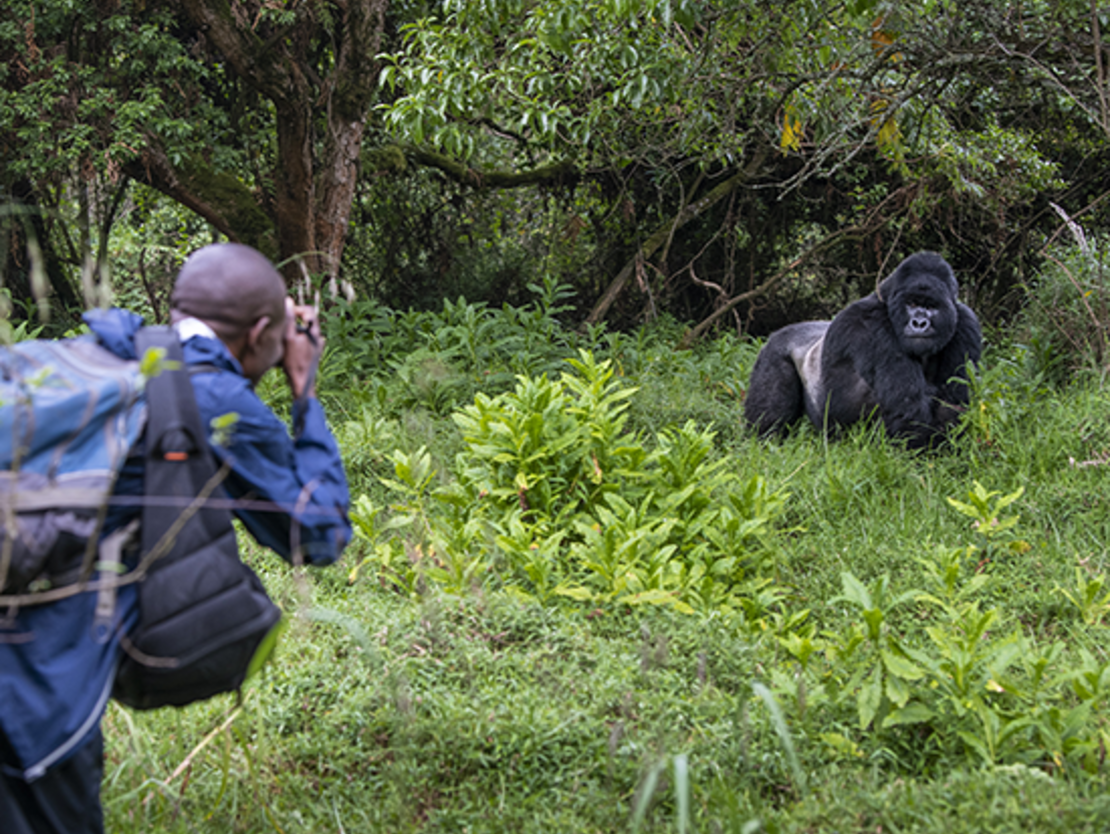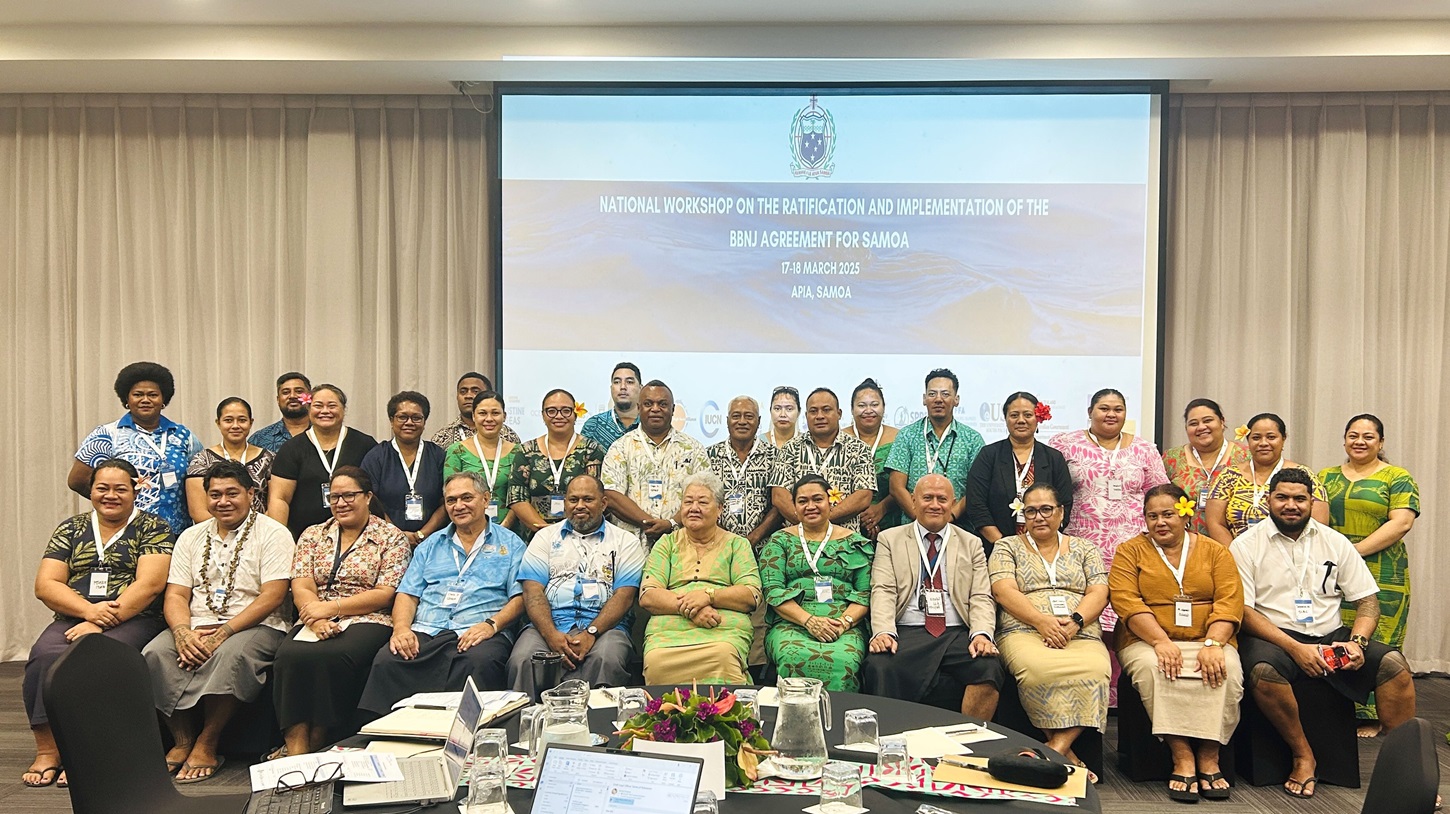Safeguarding great ape health: New IUCN SSC guidelines shed light on emerging health issues of concern in great ape populations
Great apes are severely threatened by habitat loss, poaching, disease and the impacts of climate change. As humans continue to encroach on great ape habitats, the risk of disease transmission and new pathogen outbreaks increases. In response, the IUCN Species Survival Commission (SSC) Primate Specialist Group (PSG) Section on Great Apes (SGA) has developed a new publication to provide an update on emerging health issues of concern in great ape populations.

Authored by leading great ape health experts, the guidelines introduce new technologies, surveillance and diagnostic tools to aid great ape health monitoring and disease control, as well as novel approaches for contingency planning and disease outbreak preparedness and response.
Why do we need to manage great ape health?
In recent decades, growing human-induced pressures such as deforestation and the conversion of forests into agricultural land have led to serious declines in great ape populations across their range, making effective conservation strategies a priority. One such strategy focuses on great ape health surveillance and disease control through a “One Health” approach. IUCN guidance published in 2015, which is complemented by the new publication, provides clear protocols for government authorities, conservation practitioners, researchers, tourism professionals and others working in great ape habitats for monitoring and managing great ape health in the wild.
Anthropogenic pressures not only lead to the degradation of critical great ape habitats but also elevate the risk of increased spatial overlap and direct contact between humans and apes. Concurrently, great ape tourism has grown in popularity, and while it can provide valuable support for conservation efforts, it also presents inherent risks.
Given our close genetic relatedness and growing proximity, the potential for disease transmission between great apes and humans has become a serious concern which requires an effective management strategy.
What are the risks?
Great apes and humans share susceptibility to many infectious diseases, although many human diseases do not occur naturally in great ape populations. Human diseases, which may cause mild to severe illness in people, can be devastating to great apes.
Extensive research has been conducted on pathogens infecting great apes, and recent outbreaks, such as Ebola and the COVID-19 pandemic, have heightened global awareness of the seriousness of disease transmission and ways to prevent it. It is evident that preventing disease is both more effective and cost-efficient than attempts to treat, control or eradicate a disease once introduced.
New health monitoring, disease control and outbreak response guidance
Updating and supplementing previous IUCN guidance on health monitoring and disease control in great ape populations, the new SSC publication introduces innovative tools and methods based on recent learnings from real-world disease outbreaks, which provided the opportunity to assess and further develop response measures.
The guidelines provide recommendations on a series of key topics, such as disease prevention at great ape visitation sites, important aspects for employee health programmes, and best practices for disease surveillance, diagnostic sample collection and great ape health interventions. They remind us that promoting and managing great ape health in the wild not only helps safeguard our closest living biological relatives, but also protects adjacent human populations.
Download the publication “An update on great ape population health, disease control and outbreak response: Supplement to the best practice guidelines for health monitoring and disease control in great ape populations”:

Gilardi, K.V., Düx, A., Gillespie, T.R., Kalema-Zikusoka, G., Leendertz, F., Nze-Nkogue, C., Patrono, L.V., Raphael, J, Sulistyo, F., Syaluha, E.K. & Whittier, C. (2025). An update on great ape population health, disease control and outbreak response. Supplement to the best practice guidelines for health monitoring and disease control in great ape populations. Sunderland-Groves, J.L., Williamson, E.A. & Macfie, E.J. (Eds.). Gland, Switzerland: IUCN.

